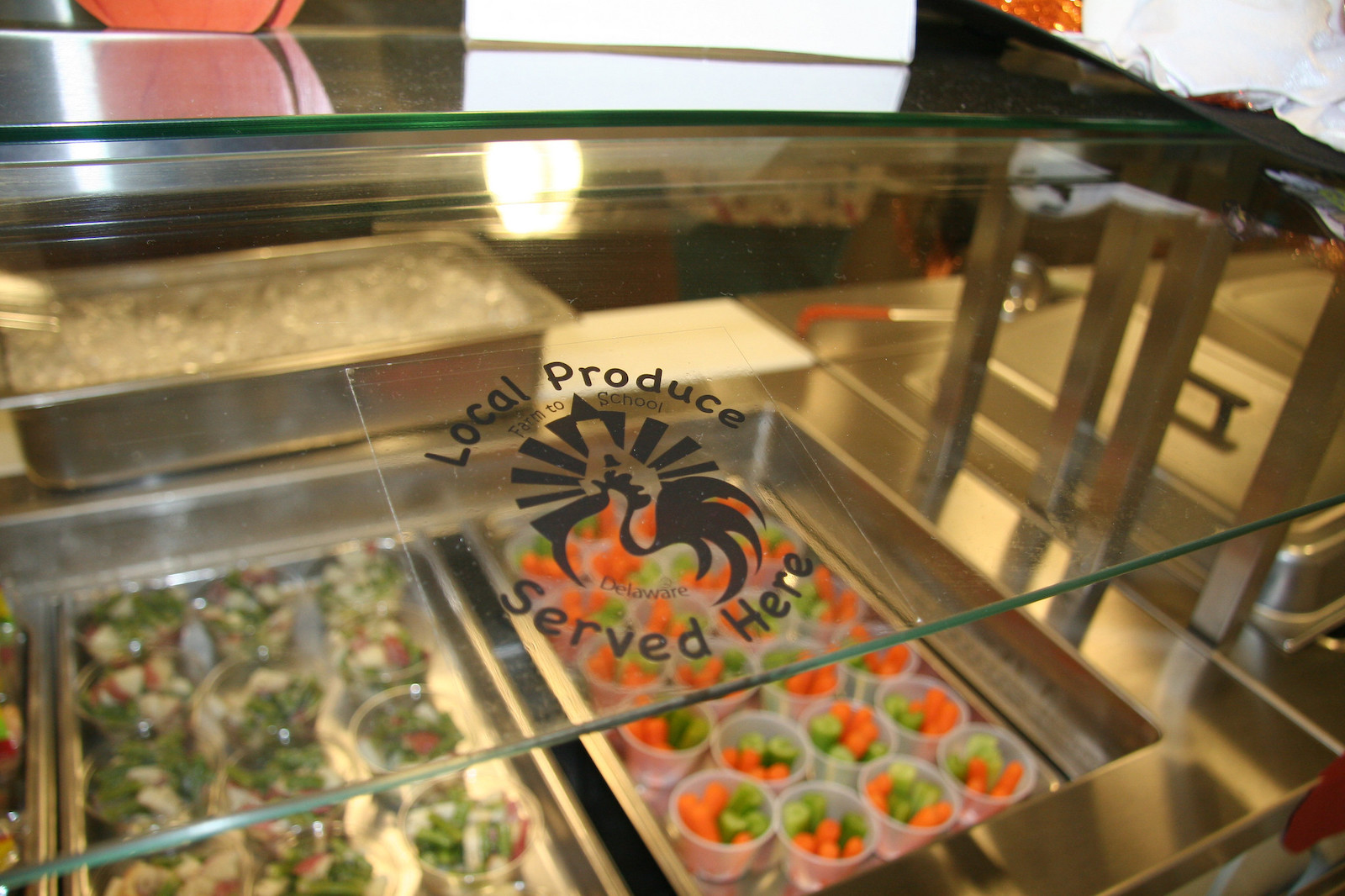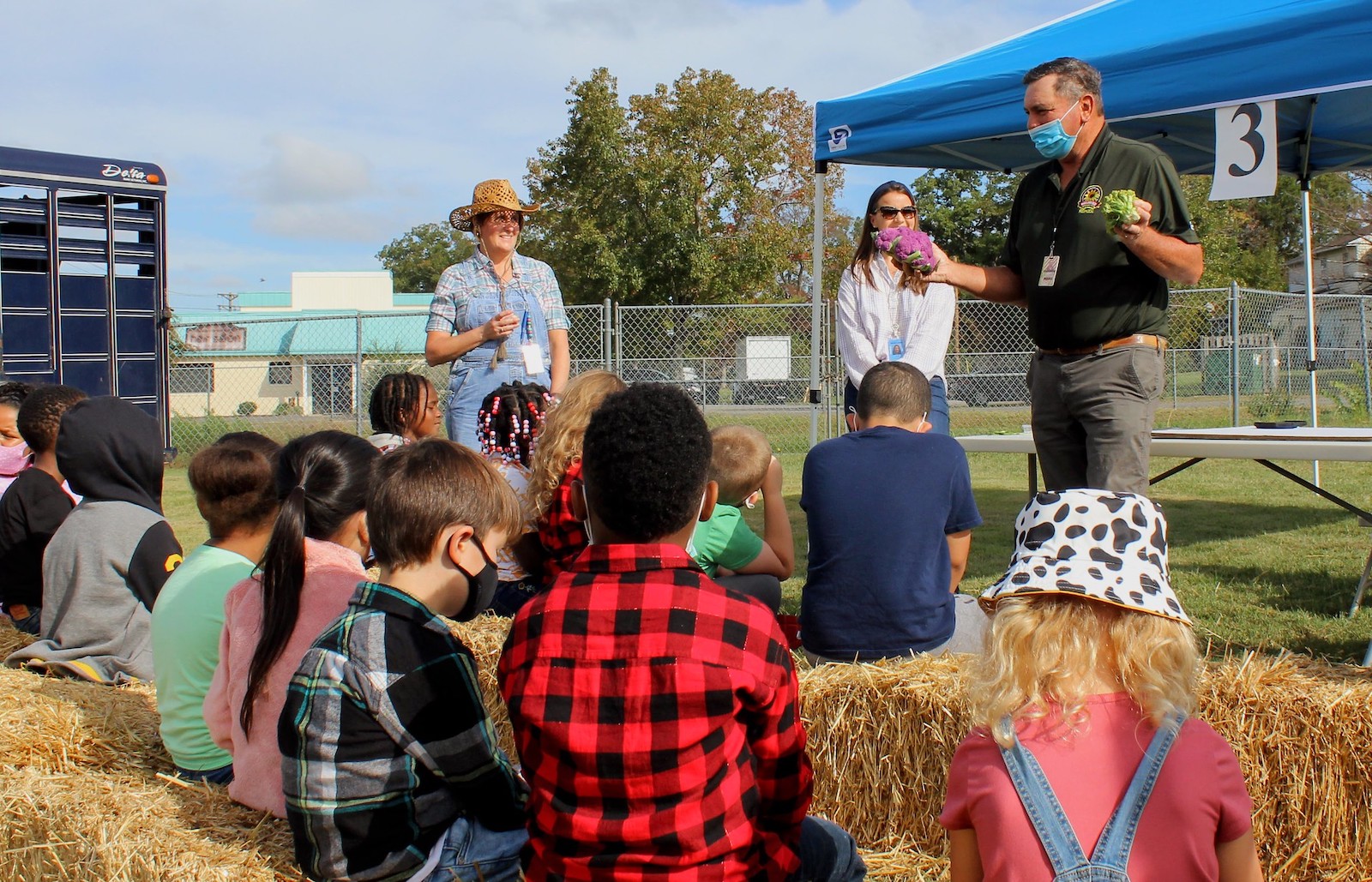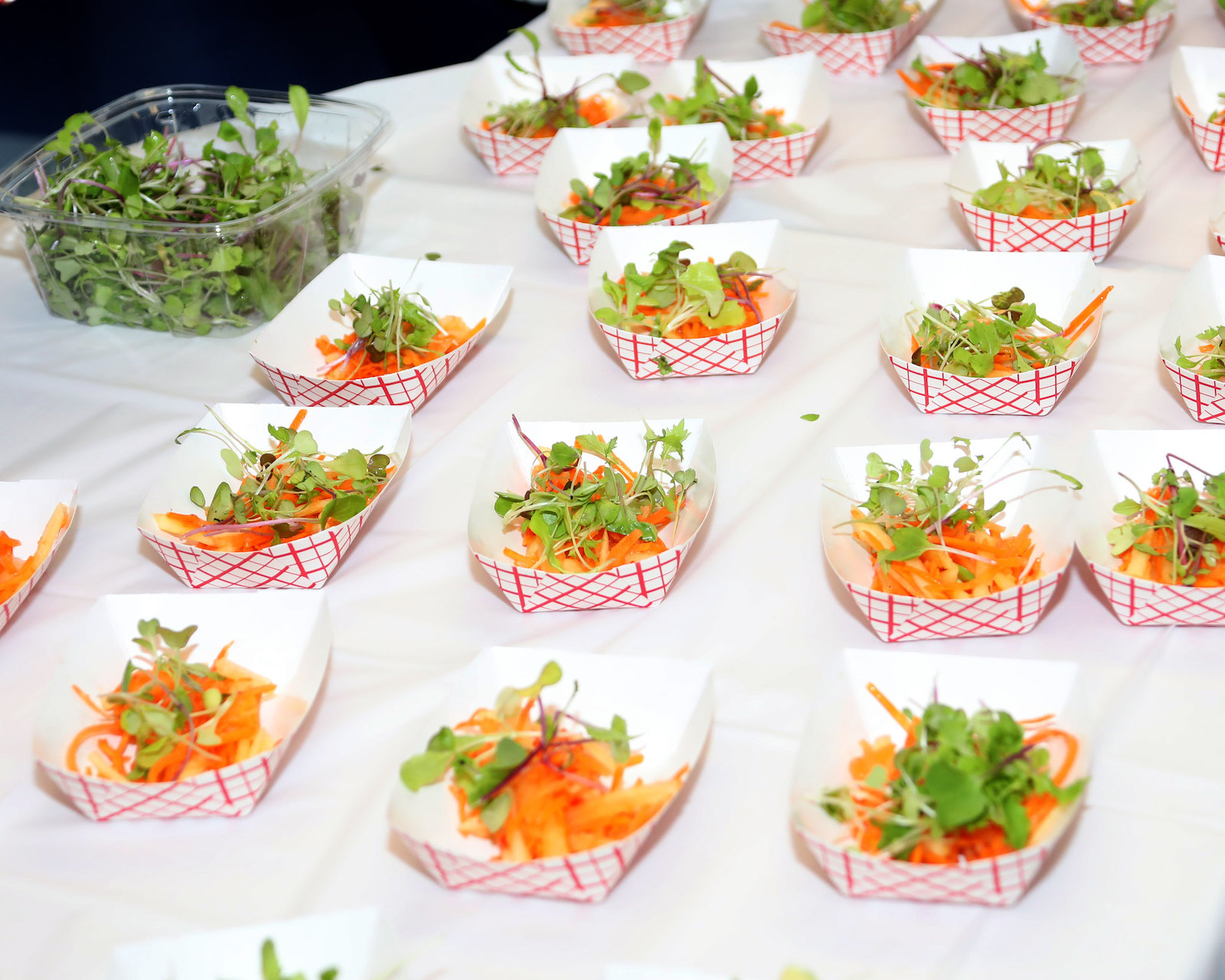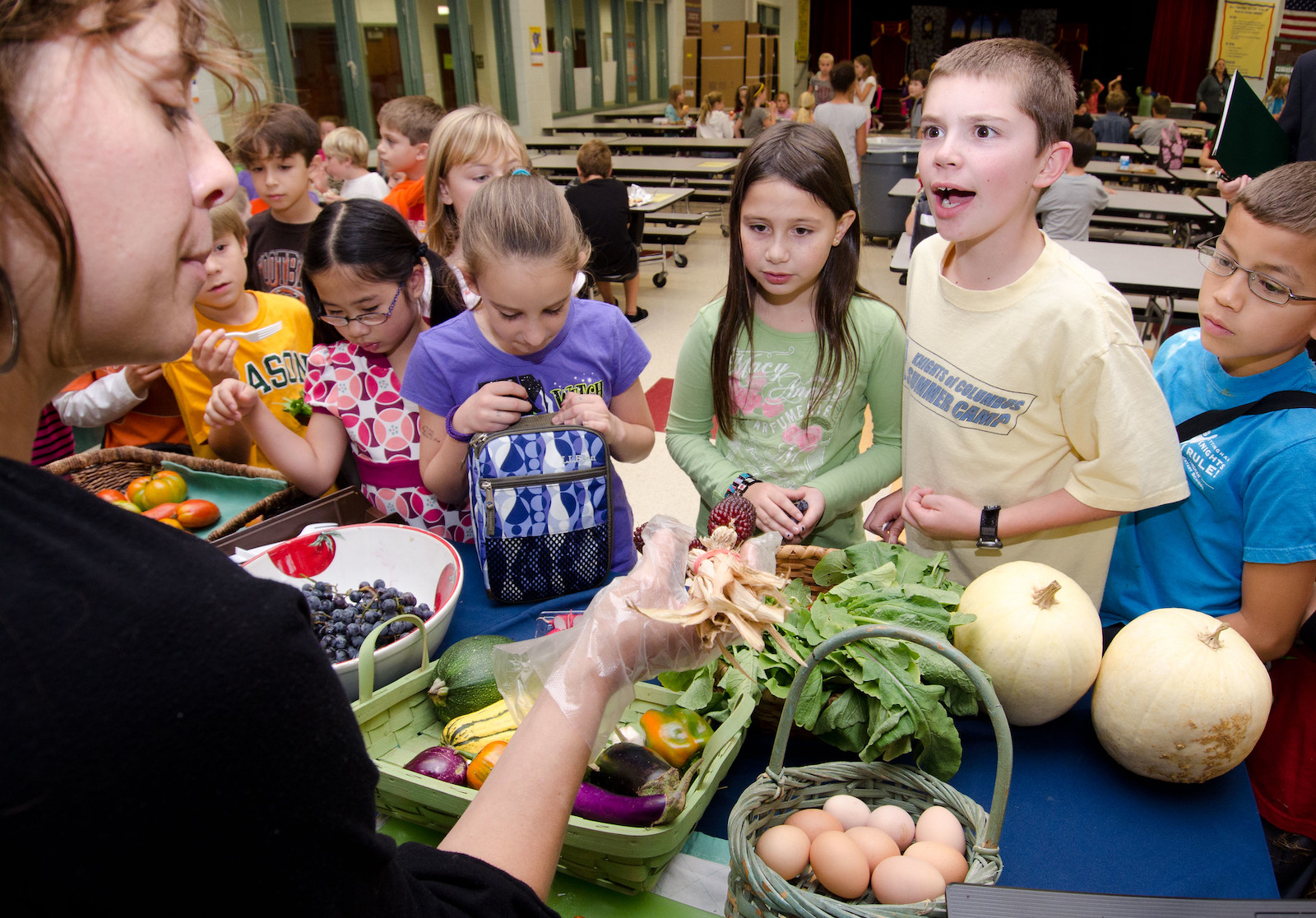USDA Photo by Lance Cheung used under CC BY 2.0
Around the world, school meals programs are one of the most important ways children receive the nourishment they need to thrive. In the United States, students received lunches at school from as early as 1894, as an incentive and an effort to support the education of students who were newly required to attend school instead of working to feed and clothe their families.
Today, the National School Lunch Program provides millions of children with low or no cost school meals, but many schools, faced with budgetary and logistical constraints, serve primarily unhealthy, highly processed foods.
But for an increasing number of schools nationwide, adopting a home-grown meal program provides nutritional and educational benefits that are unmatched by more homogeneous options.

At Sunnyside Elementary School in Delaware, fresh, healthy, local produce is served at lunchtime. Photo by Delaware Agriculture used under CC By 2.0
From farm to school
In contrast, home-grown school meals programs source food as locally as possible, with the aim of supporting sustainable agriculture by providing a steady market for local farms. Plus, these school meal programs provide students with fresher, tastier food.
They can also increase transparency on where food comes from and what farming practices look like. This enables districts to support farms with sustainable agricultural practices aiming to limit their environmental impact.
And sourcing food from local farms tends to go hand in hand with making meals healthier. Instead of highly processed foods filled with sodium and saturated fats, students receive home-cooked and fresh foods with a focus on fruit, vegetables, and lean protein.

Students at Greenview Knolls Elementary School learn about how their food is farmed during a 2021 Maryland Homegrown School Lunch Week Event
Photo by MdAgDept used under CC By 2.0
Learning about good nutrition
Home-grown school meals are a great opportunity to teach children about nutrition, health, and where their food comes from. This is especially important in communities where fresh fruit and vegetables are not readily available or affordable. Many home-grown school meals programs incorporate farm visits, school gardens, and other opportunities for children to learn.
This builds youthful supporters for local, sustainable agricultural practices and can rekindle a passion for agriculture in a world where farmers are aging. Nutrition education can be a great opportunity for children to bring lessons back home, with potential positive ripple effects for entire families.
Challenges
Though the concept seems like a no brainer, the actual logistics of linking farms and schools can be tricky. Many institutions depend on food service providers which provide regular shipments of low-cost, highly processed food packaged and prepared for industrial kitchens, that requires limited preparation.
Shifting to local produce can mean more work for understaffed kitchens that don’t have time to peel, wash, and chop food. And local purchasing often presents unexpected bureaucratic and logistical challenges. For example, at one school a food services director requested a precise size of apple that would allow her to ensure children were getting their required serving size. Large-scale industrial vendors can meet this request, given the large volume of produce they sort and sell, and that they tend to select from a huge amount of produce for uniformity (often leading to food waste). However, local produce, while generally more flavorful, fresh, and high quality may also vary more in shape and size.

Homegrown salads served at Frederick Douglas High School in Baltimore.
Photo by
MdAgDept used under CC By 2.0
Different models districts use linking farms to schools
There is an increasing number of supportive programs to incentivize and support local purchasing. In Michigan, for example, the Ten Cents a Meal program helps cover any additional costs incurred by sourcing locally. And in many places, there are food hubs that can process food and manage aggregation and transportation.

Farm owner talks to students at Nottingham Elementary School in Arlington, VA about a variety of local produce, including purple corn on the cob used to make popcorn.
USDA Photo by Lance Cheung used under CC By 2.0
What you can do
The bureaucratic hurdles of introducing a farm to school program can seem daunting, but there are plenty of resources out there. You can do the research yourself, and put those resources in front of decision-makers at school and city level. Become a tireless advocate for home-grown school meals. If you have a green thumb, you could volunteer your time to start a school garden program, giving kids the opportunity to grow their own food. If not, think about places that students could go for field trips and offer to support teachers in organizing.
And, if you pack your child’s lunch, think about including more locally sourced options in there, maybe with a sticky note sharing where the food came from. Think about any opportunity to feed children as an opportunity to teach them and their peers about their local food system.
